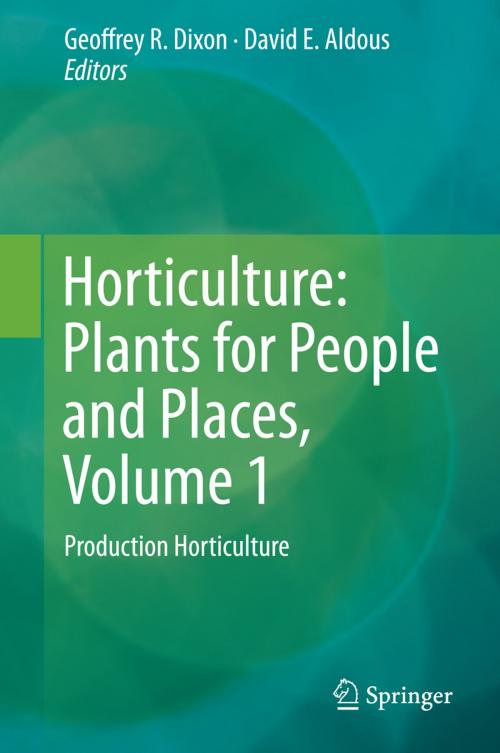Horticulture: Plants for People and Places, Volume 1
Production Horticulture
Nonfiction, Science & Nature, Technology, Food Industry & Science, Agriculture & Animal Husbandry| Author: | ISBN: | 9789401785785 | |
| Publisher: | Springer Netherlands | Publication: | June 10, 2014 |
| Imprint: | Springer | Language: | English |
| Author: | |
| ISBN: | 9789401785785 |
| Publisher: | Springer Netherlands |
| Publication: | June 10, 2014 |
| Imprint: | Springer |
| Language: | English |
This Trilogy explains “What is Horticulture?”. Volume one of Horticulture: Plants for People and Places describes in considerable depth the science, management and technology which underpins the continuous production of fresh and processed horticultural produce. Firstly, there is a consideration of technological innovation derived from basic scientific discoveries which has given rise to entirely new industries, markets, novel crops and changed social habits. Then follows accounts of the modern production of: Field Vegetables, Temperate Fruit, Tropical Fruit, Citrus, Plantation Crops, Berry Crops, Viticulture, Protected Crops, Flower Crops, New Crops, Post-harvest Handling, Supply Chain Management and the Environmental Impact of Production. Each chapter is written by acknowledged world experts. Never before has such an array of plentiful, high quality fresh fruit, vegetables and ornamentals been available year-round in the World’s retail markets. Horticulture gives consumers this gift of nutritious, high quality, safe and diverse fresh foods. This is achieved by manipulating plant growth, reproduction and postharvest husbandry. The multi-billion dollar international industry achieving this is Production Horticulture the subject of this informative book.
This Trilogy explains “What is Horticulture?”. Volume one of Horticulture: Plants for People and Places describes in considerable depth the science, management and technology which underpins the continuous production of fresh and processed horticultural produce. Firstly, there is a consideration of technological innovation derived from basic scientific discoveries which has given rise to entirely new industries, markets, novel crops and changed social habits. Then follows accounts of the modern production of: Field Vegetables, Temperate Fruit, Tropical Fruit, Citrus, Plantation Crops, Berry Crops, Viticulture, Protected Crops, Flower Crops, New Crops, Post-harvest Handling, Supply Chain Management and the Environmental Impact of Production. Each chapter is written by acknowledged world experts. Never before has such an array of plentiful, high quality fresh fruit, vegetables and ornamentals been available year-round in the World’s retail markets. Horticulture gives consumers this gift of nutritious, high quality, safe and diverse fresh foods. This is achieved by manipulating plant growth, reproduction and postharvest husbandry. The multi-billion dollar international industry achieving this is Production Horticulture the subject of this informative book.















